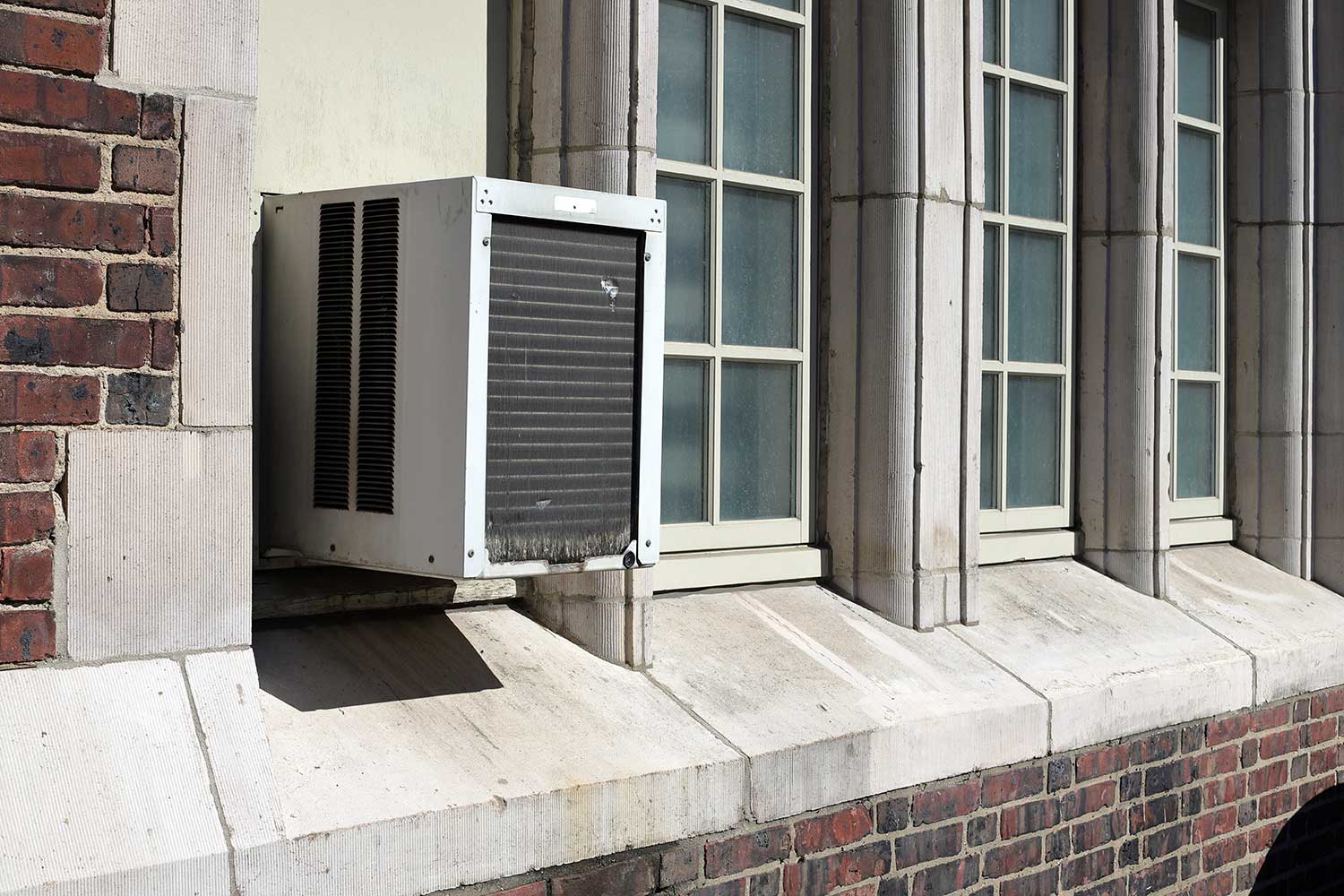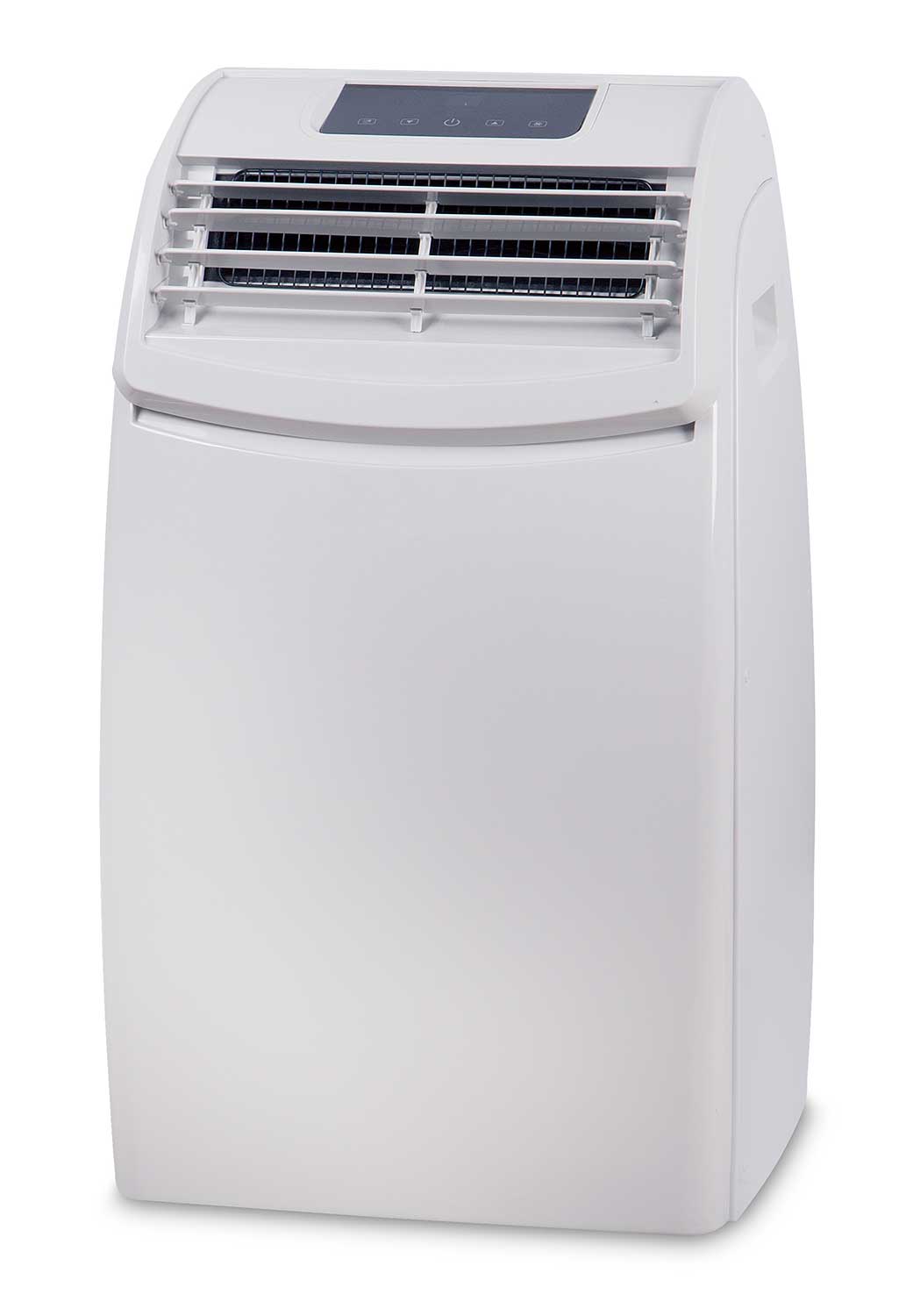With summer coming and the temperature rising, you may be thinking about air conditioning options. Central air keeps the whole house at a fairly even temperature. But it's expensive to install. Window units are great for small areas. But what if the room you pick doesn't have a window? Can you install a window AC without a window? We've checked with HVAC specialists for the solution to your window worries.
Window ACs are designed to be installed in a window. Warm air and water, byproducts of the cooling system, need a way to be removed outdoors. You can always frame a hole, rather than a window, that vents outside. However, this will mean that the AC can never be removed. Or at least, when it is, you're stuck with a difficult hole to fill or cover. The most sensible approach is simply to add a proper window.
If there's just no way to install a window AC, the other alternative is a portable AC. These aren't meant to sit directly in the window. You'll still need a way to vent the waste byproducts outside. However, there are other methods for this, and you don't necessarily need a large window. Keep reading to learn more about both of these options and which one is best for you.

How Do You Install A Window AC Without A Window?
A window unit can be installed without a window. But you'll still need some way to vent the heat and byproducts from the unit outside. In some cases, this is as simple as cutting a hole in the wall and treating it just like a window.
The only problem with this is that, well, now have a hole in the wall. If you have no intention of removing the AC unit, this might be fine. But if AC is a seasonal need, keep in mind that you'll need to do something with that hole in a few months when winter comes. And if that's the case, it's probably just as practical to simply add a window. It can meet both needs - host the AC unit in the summer, and be closed and sealed when it's cold out.
There are other methods of trapping the heat and venting it outside. For example, some people vent into a garage, where the heat and water aren't much of an issue. Some people use a conversion kit or ductwork to channel the heat outside. Unfortunately, there is no universal solution that works in all situations. If you aren't certain of a safe way to redirect the heat from your AC unit, you shouldn't even try.

Can You Put A Window AC In A Sliding Window?
Obviously, putting a window AC in a sliding window limits the use of the window. But if you can deal with covering the opening with a sheet of plywood, it's definitely doable to install a window AC.
First, measure the height and width of the unit. Be sure to account for any vents that stick out on the side. Then, measure the window opening. Be sure to measure the window directly. Don't measure from the window sill - sometimes, the sill has an angle. This gives an inaccurate measurement.
Then, build a frame. This takes two vertical pieces of wood, the height of the window, and two horizontal pieces, the width of the AC unit. Once it's fitted properly, dry-fit the AC unit to be sure it's correct. Once you have it in place, a third horizontal piece of wood will sit in the frame, just over the top of the AC unit. Then, cover the top of the frame (the open area where the AC doesn't sit) with a piece of plywood.
Can You Use A Portable AC In A Room Without A Window?
A portable AC unit is a large system on wheels. It can move around the house from one room to another. You don't have to deal with the hassle of lifting it and placing it in the window. But you do still need a way to run the intake and exhaust hoses outside.

This requires some sort of access to the outside, but not necessarily a large window. Any small access will do, like a casement window. If you don't have one of those, you can vent through a small space in the wall, ceiling, or even a door. Just remember a few tips:
- The bottom of the exhaust hose should be at least eight inches off the ground surface. Whether it goes outside to a roof or the actual ground, don't let it touch. This will prevent blockages from leaves, etc.
- Keep the intake hose away from areas that can cause contamination. For example, garbage or sewers. Stay at least 25 feet away so that you won't risk any unpleasant odors.
- Similarly, avoid running the intake hose near any areas where animals like birds or rodents are likely to nest. Waste from animals can cause breathing problems and sanitation concerns if it's circulating through your system and, as a result, your breathing air.
Is There Another Method For Cooling A Room?
Maybe a window unit just isn't going to work for you. A portable unit doesn't seem any better. Is there any other option?
Evaporative coolers, sometimes also known as swamp coolers, are another solution. These are sometimes actually a better solution than an air conditioner in dry areas. Air conditioners remove humidity from the air, while a swamp cooler adds moisture. If the air is already dry, making it drier with AC isn't ideal. Conversely, too much humidity from a swamp cooler can potentially cause mold or mildew if your air already has a lot of moisture.
If a swamp cooler, a direct form of evaporation, is too risky in your already humid climate, don't discount the idea. There are also indirect evaporative coolers, which don't change the relative humidity of the air. Read more about evaporative coolers here.
Click here to see this cooler on Amazon.
How To Increase Air Circulation In A Room With No Windows
If your room has no windows, an AC unit might not work for you. But you can at least benefit from improving the air circulation. Here are some tips:
- Add a ceiling fan.
- Use portable fans to keep the air moving.
- Install a mini-split ductless air conditioner.
In Closing
A window air unit is made to be installed through a window. If your room doesn't have a window, you still need to vent the exhaust outside. You can always do this by framing a hole in the wall. This, just like a window, lets the byproducts move outdoors. However, keep in mind that this will permanently change the wall. It's not easy to reverse- eventually, you either have to fix the hole or always leave the unit in.
Another alternative is a portable AC, which can vent outside through a small hole. Evaporative coolers, also known as swamp coolers, are a third option. And finally, consider adding ceiling fans, portable fans, or a mini-split ductless air conditioner.

